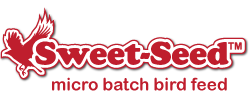How to Stop Those Hummingbird Feeder Drips

Hummingbird feeders may seem to be cleaner and neater than seed feeders, but when the sticky residue from a leaking feeder stains decks or patios, creates a rancid smell and attracts unwanted bugs, mice or other pests, they don't seem so clean after all. Fortunately, there are easy ways to minimize and even prevent hummingbird feeder leaks.
No-Leak Feeders
While any nectar feeder will leak if it is damaged or used improperly, there are some feeder styles that are virtually leak-free. Saucer or dish-style feeders with feeding ports above the nectar reservoir leak very little, especially if the nectar level is monitored and kept below any seam in the feeder design. Smaller inverted reservoir feeders also tend to leak less, because there is less fluid to exert pressure against the natural vacuum of the feeder so drips are minimal.
The very best, completely leak-proof feeders are also ones that refill themselves and never need cleaning – nectar-rich flowers. Planting a hummingbird garden or adding nectar flowers such as bee balm, salvia, columbine, cardinal flower and trumpet creeper to flowerbeds will ensure hummingbirds always have a tasty food source to visit. Best of all, no cleanup or maintenance is required other than seasonal deadheading or very basic gardening to keep the flowers blooming prolifically.
Minimizing Drips and Leaks
When a hummingbird feeder does develop annoying drips or occasional leaks, there are easy steps to minimize spillage and keep the nectar where it belongs.
- Fill It Up - A full reservoir develops a better vacuum seal to minimize leaks. Feeders should be kept as full as possible rather than being allowed to drain completely to the point where leaks can be persistent. Furthermore, a full feeder ensures there is always abundant nectar for hungry hummingbirds to sample. Do not overfill feeders, however, which could have the opposite effect and make leaks more prominent because the vacuum seal does not form appropriately.
- Keep It Cool - When nectar gets warm, it expands and exerts more pressure on seals and against the air pressure that keeps the feeder from leaking. The warmer a hummingbird feeder is, the more prone it will be to leaking, especially less expensive plastic feeders that may warp when hot. Positioning feeders in the shade, particularly during the hottest part of the day, will reduce leakage.
- Pull the Perches - Hummingbirds do not require perches on their feeders in order to feed, as they are perfectly capable of hovering as they sip. Larger, heavier birds such as orioles, warblers and finches, on the other hand, will land on the perches and overbalance the feeder, causing it to leak and drip. If you remove those perches, the birds can't upset the feeder. Removing perches also keeps predators from accessing the feeder, keeping hummingbirds safer.
- Safe Positioning - Of course you want to place a hummingbird feeder where you can easily see it, but avoid putting the feeder in a busy area or close to a popular path where it might be accidentally knocked or bumped, causing drips. Also avoid positioning these feeders in areas with stiff breezes or where pets could rub on the pole or knock the feeder down. Ideally, place the feeder in a flowerbed of nectar-rich blooms, and small drips will go unnoticed in the foliage even as more hummingbirds come to visit the natural and supplemental nectar.
- Pass on Plastic - Over time, many plastic nectar feeders will naturally warp as they are subject to hot and cold days. This makes the feeder a bit looser at critical seals and seams, and increases leakage. Choosing a feeder with metal or glass parts, however, will minimize that warping and keep the feeder performing at its peak for many years.
Leaks Happen
Even a high quality, well maintained, attractive hummingbird feeder will develop the occasional leak or drip. The best solution to minimize any problem with leaks is to always keep the feeder at its best, and clean up spills quickly so they do not attract undesirable insects or rodents. By taking several different steps to minimize leaks, it is possible to enjoy multiple nectar feeders in the yard without worrying about wasted nectar or poorly performing feeders.
Image by Bryan Hanson from Pixabay
